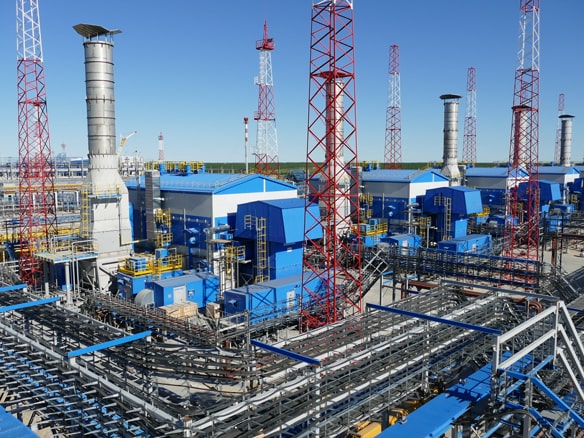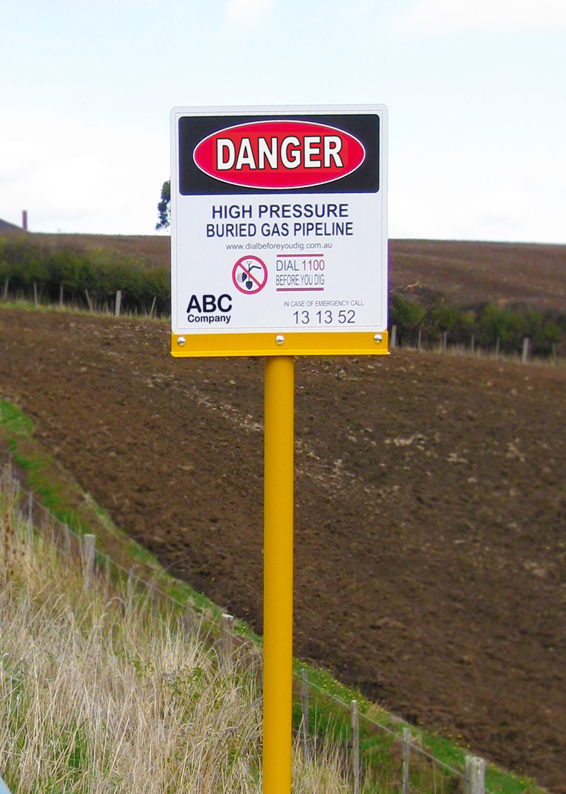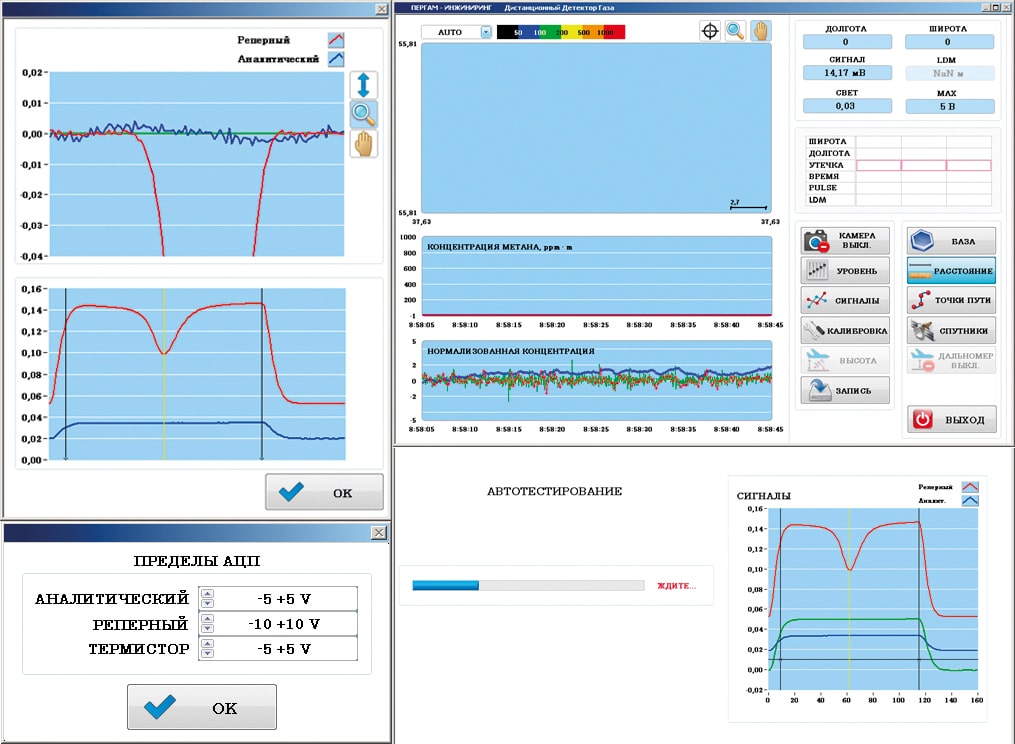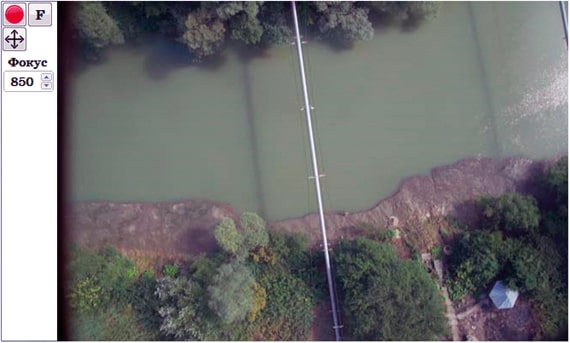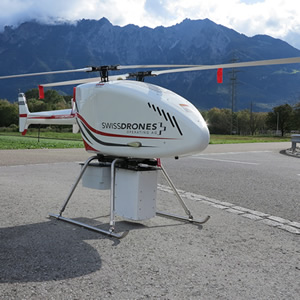Gazprom Ufa has implemented Pergam LMS for their gas
Problem
The most important thing during Compressor Station operation is early detection and localization of gas leaks that could be on the process equipment and high pressure piping. Periodic monitoring of air on the industrial sites of gas transportation facilities are made by regular rounds of staff on duty, which carries out sampling from process equipment in locations where gas accumulations could happens in the event of a leak.
Sampling is performed periodically using portable gas analyzers and provides periodical monitoring of ambient air. In addition, access to some technological components, such as compressor stations connecting nodes can be complicated due to the significant distance from the core infrastructure, the snow drifts in the winter. In such cases, most of the time staff spends on access to technology nodes. All these factors lead to the issue that the staff cannot provide full control of the equipment and to detect leaks in time, which could be a problem and lead to an emergency situation. LLC «Gazprom Transgaz Ufa» are took control under the gas transportation system with a branched structure (9 industrial branches). In addition, the company is responsible to the huge territory of pipeline and gas facilities. All this demanded to start the search for new technical solutions in the field of leak detection.

LMS communication box
Solution
The most effective solution is to use a remote laser methane detection method. The laser detectors, manufactured by Pergam-Engineering, is widely used in Public Joint Stock Company Gazprom for a helicopter survey of transmission pipelines. The operation of the laser detector in a compressor station demanded revision and adaptation for stationary applications. As a result, LMS (Laser Monitoring System) has been developed and put into operation as a stationary system of methane detection in the technological sites atmosphere and compressor stations. The main goal during creation was to achieve the following main objectives:
- Instant leak detection (short response time);
- Immediately notification to station personnel;
- Events log (automatically records all events + system diagnostics);
- Control the technology equipment state;
- Integration into SCADA system.
The methane detection system in air compressor stations technological sites called LMS is designed to detect methane in the atmospheric air. System alarms automatically in case of exceeding pre-determined levels. The device measures the total concentration of the gas in the laser beam, which is reflected by the topographical object (earth, grass, trees, asphalt, brick, etc.), that could located at a distance of 150 m from the LMS optical unit.
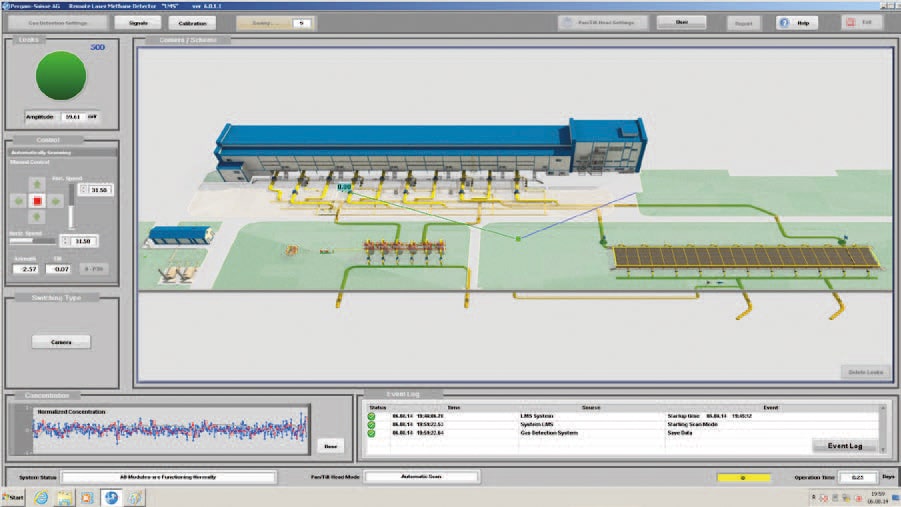
Main window with facility scheme

Camera view
The main elements of the system LMS is an optical unit, PTZ, rack with network equipment, fiber-optic communication lines and operator’s workplace with PC. Optical unit is installed permanently on PTZ in such way that the optical axis of the receiving channel has been directed directly to the important object, which is supposed to be controlled. LMS is controlled automatic by using the PC with special software and preset monitoring road.
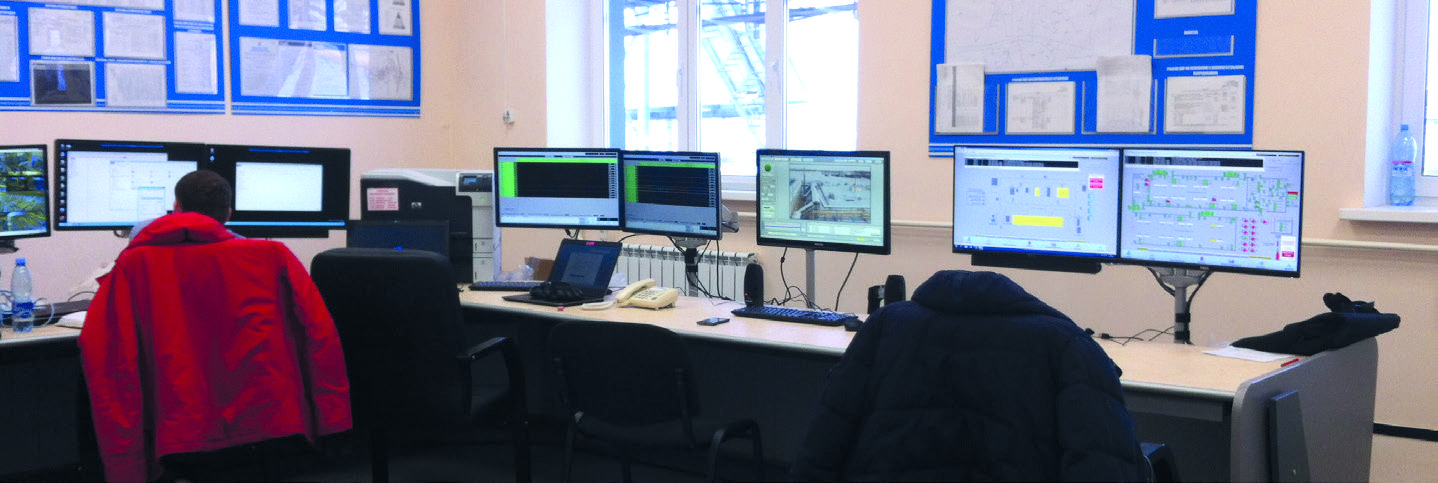
Remote control center
PC is installed in the operator room and connected with the components of the optical unit (laser, photodetectors and HD camera) via a fiber optic link. System is managed by using the appropriate software created by Pergam. The calculated instantaneous methane concentrations are depicted on a real time graph, with simultaneous data recording into the computer memory and alarm events when a gas leak is detected. All data is stored in computer memory for post-processing and reporting. The system can be operated in manual and automatic modes. In automatic mode, the detector continuously scans the area of the compressor plant according to a predetermined route. If a leak is detected, the system stops scanning and alerts personnel immediately.
«We used LMS during three year, and we are absolutely satisfied with the LMS system which allows us to increase our safety standard further for remote leak detection. The system is very reliable and we have decided to install LMS in our other compressor stations. The implementation has allowed us to reduce the surveillance and maintenance costs from our compressor stations» — Romanenkov Pavel Georgievich, Deputy General Director of Production, LLC «Gazprom Transgaz Ufa»
Airborne patrolling
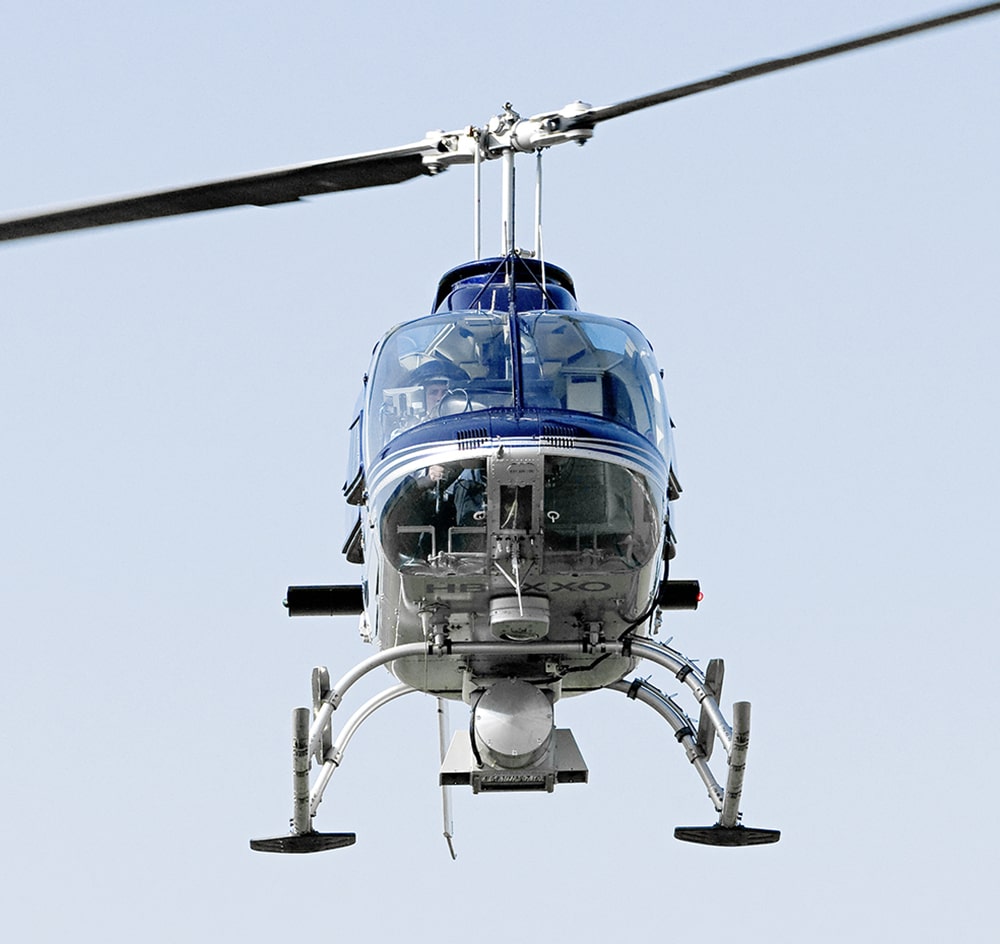
of cooperation with GAZPROM
ALMA
Bestseller. Airborne patrolling with productivity up to 600 km/day (373 miles).
In 2004 for the very first time a helicopter-based ALMA system was shipped to Gazprom transgaz Yekaterinburg JSC. At present 15 helicopter-based ALMA solutions are used at GAZPROM facilities. Among our customers there are 11 transgas companies (?) and 2 contractors, which render main gaslines airborne inspection services.
The key advantage of the ALMA helicopter-based version is to land right away and to confirm the detected leak using a portable device.
The following helicopter types utilize our device: Мi-8, Мi-2, Ка-26, Bell 206, Robinson 44, and Robinson 66 all around the world.
Specifications
ALMA can be installed on the following helicopters and airplanes: МI-8, МI-2, Ка-26, Bell 206, Robinson 44, Robinson 66, Cessna.






Natural Gas Detection-UAV (airplane type)
Inspection from the altitude of 100 m at the speed of up to 100 km/h. Remote data transfer on detected leaks to UAV operator’s monitor.
Traditional manned helicopter flights have become rarer in order to optimize and save expenses. Due to this fact it has become a burning matter to replace them with UAVs.
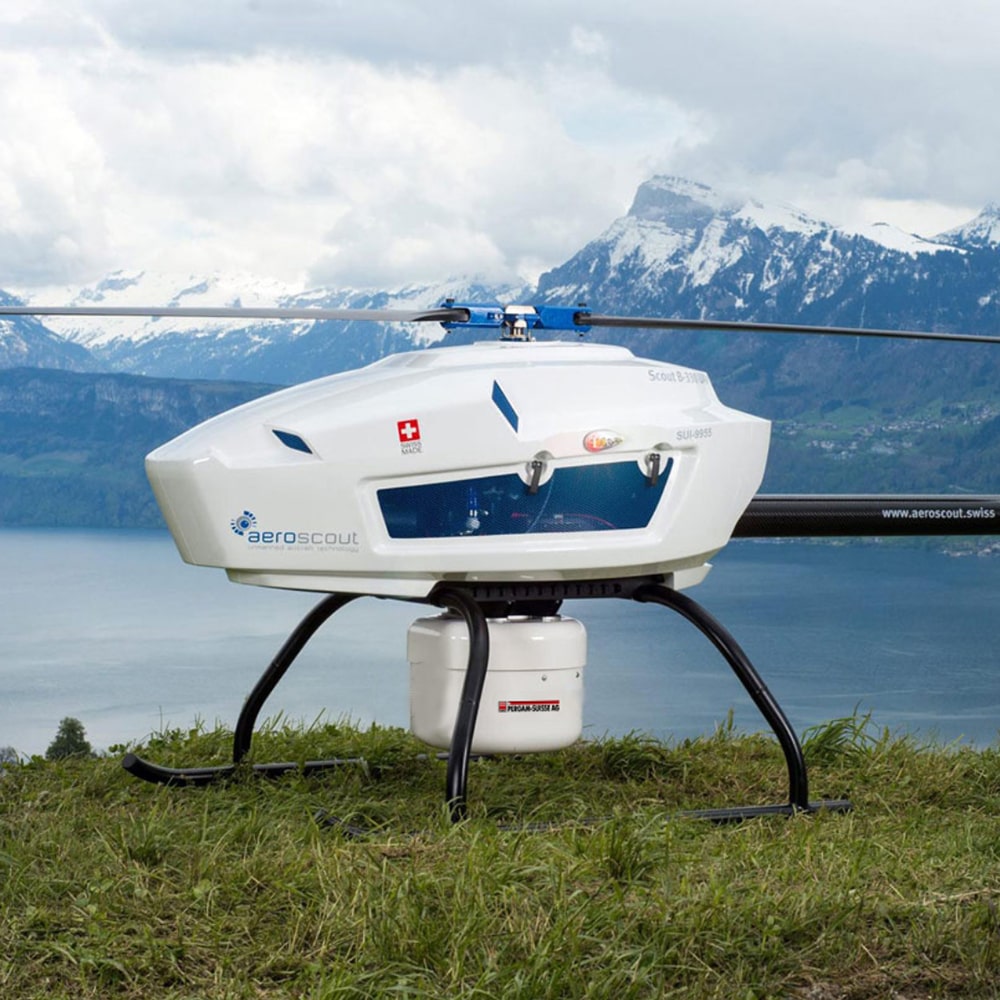
Natural Gas Detection-UAV (combustion engine)
High capacity and independence due to combustion engines.
Main gasline inspections with static hovering above some objects. 300 km-long flight after a single refuelling. Emergency landing system and aircraft frontal zone monitoring.
At the customer’s request we designed three UAV versions, which cover the whole variety of airborne methane leak detection tasks. All the PERGAM solutions can be steered both automatically (using GPS coordinates) and manually.
Pictures of Natural Gas Detection-UAV, combustion engine
Ground patrolling
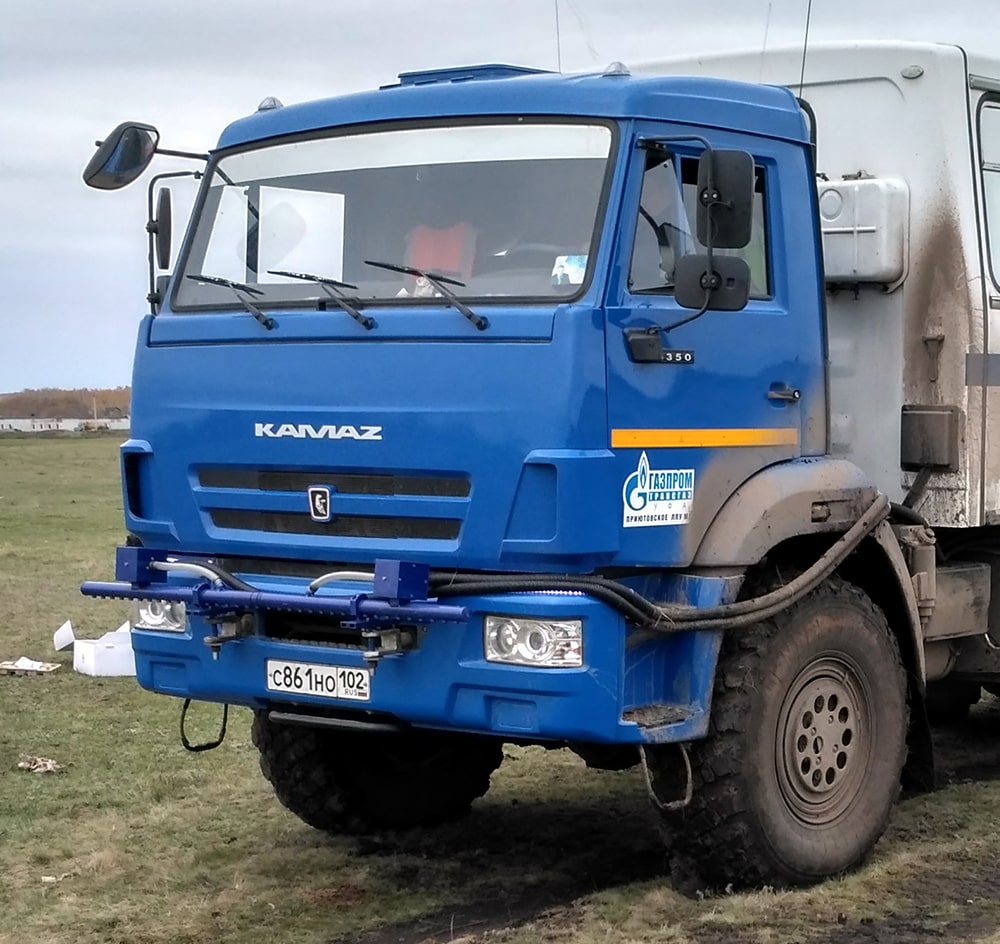
SELMA Roof and MPB
For leak pinpointing and detailed logging.
It is 100 times more sensitive in comparison with the airborne system due to sampling, possibility to stop at any time and to pinpoint the leak using a portable laser detector or a thermal imager.
Two device options: a roof remote version and an air-sampling bumper version. For increasing of detection capability it is possible to install both versions simultaneously.
Worldwide cooperation
Gas companies all around the world utilize PERGAM technologies.

Argentina
TGS & TGN

Australia
APA Group

Bulgaria
Bulgartransgaz

China
Baotou Gas CompanyENN Energy Limited
five more
Towngas
Shenyang Gas Company
Tianjin Gas
Xinjiang

Czech Republic
Net4Gas

Estonia
AS Eesti Gaas

Germany
SPG Group

India
GAIL

Japan
Tokyo Gas Engineering

Lithuania
Amber Grid

New Zealand
Vector Limited

Pakistan
Sui Southern

Russia
Gasprom
Sakhatransneftegaz

Singapore
Singapore Petroleum Company

South Korea
KOGAS Safety
KOGAS

Switzerland
Ereca AG

Turkey
Botas
